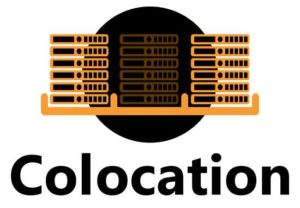5 Predictions About The Self-Storage Industry
Tech startups that want to disrupt established sectors need to understand what defines industry trends and where the industry is headed. For my company, that industry is self-storage, which is dominated by a few big-name players and small site operators.
Despite being a mature industry, self-storage units San Francisco continues to see innovations and growth, making it a worthwhile investment and a fun place to work. Here are my four predictions for the self-storage industry’s trajectory in the future years, as the founder of a peer-to-peer storage marketplace in the United States.

-
Consumers will find storage facilities mostly through online methods.
Traditionally, walking the store back and forth was the most common method of acquiring new tenants. People would drive by a storage facility remember where it was, and come back later. Customers are day by day turning to the internet to investigate storage choices. According to the 2019 Self Storage Almanac, the internet overtook drive-by as the leading source of tenants in 2017. It’s Really important to rent the best Self storage unit Company more Safety And 24/7 Access to your Unit.
There are numerous ways to find and investigate storage units online, including digital advertising, SEO, and storage aggregators.These online channels present new potential for rising storage innovators to build on and disrupt the market as the competitive advantage of physical location declines.
-
While demand continues to rise, new supply will keep pace in the short term.
The self-storage market is characterized by constant demand growth. According to the 2019 Self Storage Almanac from Mini-Storage Messenger, supply has maintained with demand up to now, with over 90% occupancy rates being normal since 2015.
To meet this rising demand, real estate investment trusts (REITs) have invested vast sums of money in the construction of hundreds of thousands of extra square feet. However, industry analysts believe that in the medium term, this oversupply of new storage facilities will outstrip demand, resulting in a drop in the decade-long high returns experienced by some of the industry’s top players, such as Public Storage and Extra Space Storage. As storage providers fight to fill their units, increased supply could lead to reduced unit rental pricing.
-
Development of new self-storage facilities.
In the medium to long term, limiting supply growth while demand grows will result in considerable increases in rental prices. For example, the city of New York recently enacted a zoning freeze. It now takes two years only to get special building permission.
The regulation was enacted due to a lack of space, the displacement of firms that provide high-quality jobs, and a negative influence on the city’s attractiveness, according to the judgment. Furthermore, storage facilities may not generate the same amount of sales tax and other revenue as other commercial or industrial establishments.
New York joins a growing list of big cities with similar limitations, including San Francisco, Miami, and Charleston, with more to follow. I’ve also discovered that the installation of storage facilities will be limited in numerous smaller cities.
While storage operators are trying to adapt by developing more appealing facilities with lower footprints, tenants will still be responsible for paying for these enhancements. This tendency is significant not just because it has an impact on construction costs and supplies, but also because it has an impact on occupancy and consumer prices.
Existing storage facilities will fill up faster if no new units are created in a city. Similarly, because of the lack of fresh competitors, storage facilities can raise their costs, thereby creating a monopoly in their communities.
As a result of this trend, my organization is attempting to unleash supply benefits that lower consumer pricing. Tenants can rent unused space within existing residential, commercial, or industrial properties rather than building new storage facilities.
-
The competition for the best storage performance will heat up:
The requirement for lowered latencies to reduce application response times are the first data storage trend. Lower latencies contribute to improved productivity, faster time to actionable insights for databases, faster time to market, larger market share, and faster time to revenues.
For high-performance computing message passing interface applications, reduced last byte latencies are critical.
-
Future prediction:
As the sharing economy becomes the primary mode of transaction, I’m convinced that homeowners sharing their unused space will become more widespread. This prediction thrills us at Neighbor because we assist customers in monetizing their extra space and finding nearby cheap storage solutions.
As new disruptors emerge, stagnant industries, such as self-storage, will be compelled to evolve, adapt, and innovate to provide a better user experience.
Self-storage, although being a mature market, continues to see innovations and growth, making it a valuable investment and a fun place to do business. Over time many changes have come in this industry and post-Covid situations are completely different and above mentioned are some of the popular predictions done for the self-storage industry.







